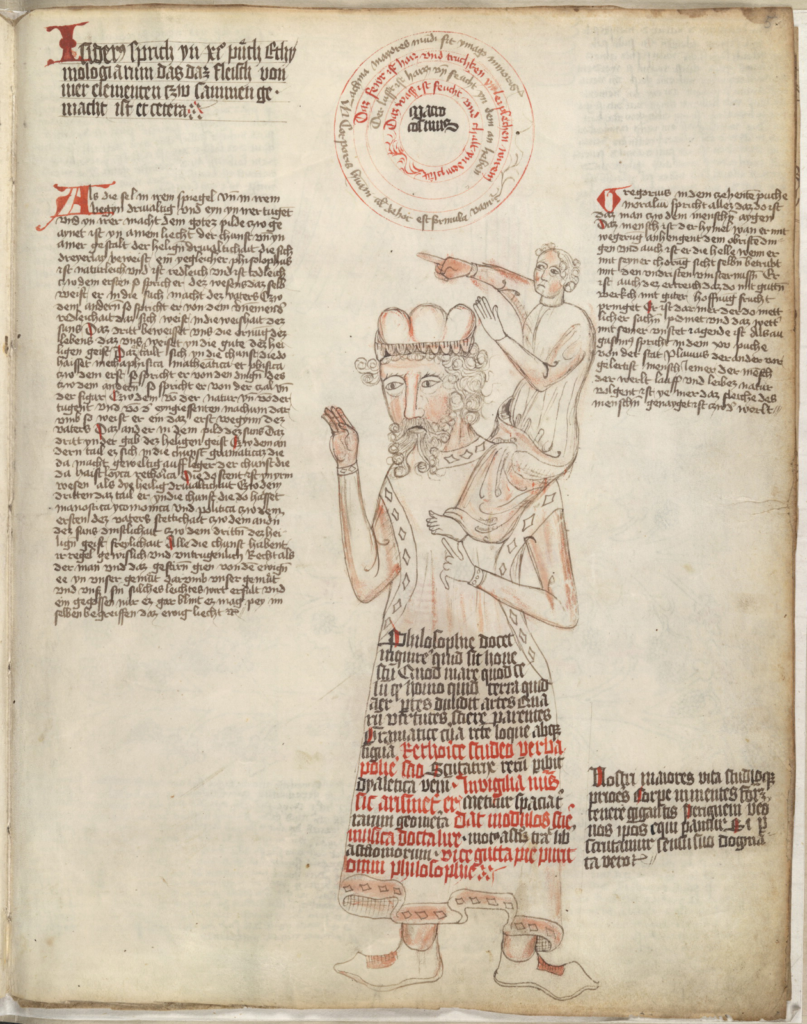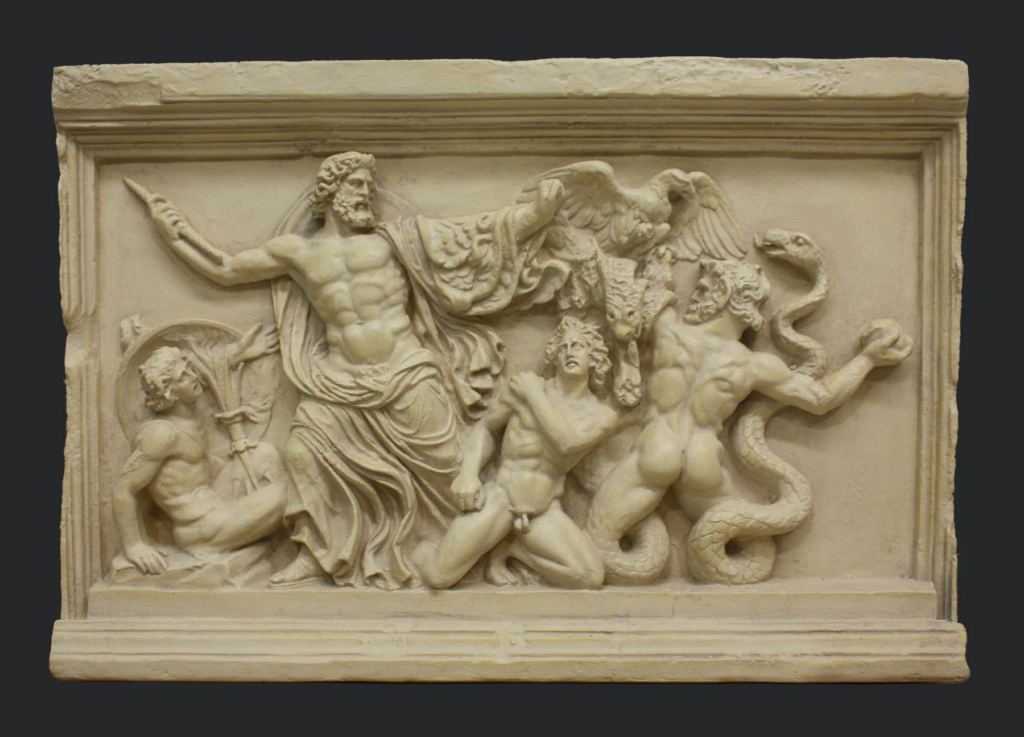“If I have seen further, it is by standing on the shoulders of giants”
Everyone knows this quote. The thing is, it’s difficult to say if it means what you think it means.
Sure, Isaac Newton, was referring to his teachers and the philosophers whom he learned from, but more explicitly the Greek Heroes.
But, this bold-faced metaphor for building on the works of your predecessors might be less of a metaphor than it seems.
In 1661, Newton attended Trinity College at Cambridge, where teachings were based on those of Aristotle, to the point where students took notes and studied in Greek. Newton’s Quaestiones are a notebook containing greek notes on his curriculum, mechanical philosopy, and ethics – which, except for a brief interlude to discuss Descartes metaphysics, were entirely Aristotlean.
Newton even developed calculus from the binomial theory, based on work by Euclid and Diphantus (both Greek).
Amicus Plato amicus Aristotle magis amica veritas (Plato is my friend, Aristotle is my friend, but my best friend is truth).
So when Newton refers to giants, he is referring to the Greek heroes of his academia, Aristotle, Plato, Euclid, Diphantus… he’s referring to standing on their shoulders.
And there’s were the story gets a lot more interesting.
The Cult of Heroes and Mammoth Bones
You see, the ancient Greeks actually believed that past generations of man were larger, smarter, faster, better in every way. The Heroes of the Greek mythos were giants, literally, in that they were estimated to be two or more times the size of a modern man. And they were worshiped, with cities built around their graves with shrines known as Heroön built in their honor. While many were viewed as simple cremated bones in an urn, others were viewed as literal giants – with descriptions of their bones in place.
That’s recorded throughout the mythos, by celebrated wise men, some of whom I’d even heard of before, like Pausanias, Solinus, Pliny, and others.
*If you don’t know your Greek historical figures, just trust me on this. These people were (mostly) respected and are well-known and studied. Feel free to skim the names.
“Before there were any humans on Pallene, the story goes that a battle was fought between the gods and the giants. Traces of the giants’ demise continue to be seen to this day, whenever torrents swell with rain and excessive water breaks their banks and floods the fields. They say that even now in gullies and ravines the people discover bones of immeasurable enormity, like men’s carcasses but far bigger.” – Solinus
- The city of Tingis (Tangier) boasted of a giant, and, Roman soldiers dug into his burial mound and found a skeleton, which they then reburied.
- Roman Emperor Hadrian was also well-known for his fascination with giant bones, even visiting the tomb of Ajax, who purportedly stood over 5 meters tall.
- Pausanias, an explorer at the height of the Roman emperor, records finding the kneecap of Ajax, a Hero of the Trojan War, which he described as being the size of a discuss used by boys, or roughly 15cm wide, or over three times that of a man.
- Pausanias also wrote of viewing bones of the Hero Asterios which were 4.5 meters tall.
- The famous story by Herodotus, where the Oracle of Delphi sends the Spartans on a quest to return the bones of Orestes to their own city also refers to a 3-meter-tall skeleton.
- And Pliny reported a giant’s skeleton in Crete, following an earthquake.
Did the Ancient Greeks actually view their ancestors as giants? Probably. And that may or may not have been influenced by fossil beds with mammoths and pygmy hippos – namely because the skulls of those animals are very quickly and easily destroyed and rarely preserved, and the skeletons of those animals can be difficult to tell apart from those of giant humans – especially when in states of decay.

Pausanias also references stories of the plain of Megalopolis, Pallene, the Phlegraean Fields, and Crete as being the birthplaces of the giants and the sites of ancient battles with them. Those sites are also major fossil sites, where volcanic eruptions frequently push fossils to the surface.
That evidence all points to “yes”, but it’s all conjecture. No fossils have been found in any of the many Heroes tombs – but the descriptions, which match those of elephant relatives, remain.

And, because of the proliferation of the works of Aristotle as the primary basis of teaching in Western Europe, those ideas proliferated through Western Europe.
“We are dwarfs [] but dwarfs who stand on the shoulders of those giants, and small though we are, we sometimes manage to see farther on the horizon than they” _ Umberto Eco

In addition, the trend of attributing giant bones to being those of giants became a factor in Western Europe. For example, a fossil in 1613 France was attributed to Teutobochus (a legendary giant), inciting talk and contemplation at the time. However, it was much later identified as a mastodon.
Those misinterpretations of fossil findings continued up until the 1800s, with some even taking place in the United States. The Claverack giant is a folk legend based on the finding of a 2kg mastodon tooth found in New York State and touted as a giant (Nephilim) tooth from the age of the bible.
Giants are also present in almost every mythos, which may relate to the fact that there’s something terribly romantic about a giant human or the fact that our early ancestors were as much searching for answers without enough information as our more recent ancestors.

The decline of man
What most of these mythologies, starting with the ancient Greeks, have in common is the presumption of a decline or a fall of man.
“It is hopeless [] we no longer have the learning of ancients; the age of giants is past.” _ Umberto Eco
Ovid’s metamorphoses describe the moral decline of man through the ages of gold, silver, bronze, and iron – the reduction of man from gianthood to modern stature part of the descent of man from natural order into chaos.
Those ideas of the inherent degeneration of man – of the reduced capability and strength of forward generations, is present in most western mythos and culture.
That’s also true in the Christian bible, where the first of man lived for 930 years (Genesis 5:5 ), his son at 912, his son at 905, and so on. In the mythos, each next generation is successively worse than the previous – despite the fact that evidence shows that with written language and the ability to teach next generations, we are able to build on ideas and concepts and create successively more complex and creative things.
And, in part, it’s probably a natural extension of the propensity of humans to think lesser of the younger generation.
“[Young people] are high-minded because they have not yet been humbled by life, nor have they experienced the force of circumstances. []They think they know everything, and are always quite sure about it.” _ Aristotle
“Our sires’ age was worse than our grandsires’. We, their sons, are more worthless than they; so in our turn we shall give the world a progeny yet more corrupt.” _ Horace
“Youth were never more sawcie, yea never more savagely saucie . . . the ancient are scorned, the honorable are contemned, the magistrate is not dreaded.” _ Thomas Barnes (1624)
“Whither are the manly vigour and athletic appearance of our forefathers flown? Can these be their legitimate heirs? Surely, no; a race of effeminate, self-admiring, emaciated fribbles can never have descended in a direct line from the heroes of Potiers and Agincourt…” _ Anonymous, 1771
“…a fearful multitude of untutored savages… [boys] with dogs at their heels and other evidence of dissolute habits…[girls who] drive coal-carts, ride astride upon horses, drink, swear, fight, smoke, whistle, and care for nobody…the morals of children are tenfold worse than formerly.” Anthony Cooper, 1843
“We defy anyone who goes about with his eyes open to deny that there is, as never before, an attitude on the part of young folk which is best described as grossly thoughtless, rude, and utterly selfish.” _ 1925
*no, really, how far back can I physically roll my eyes? Because.
But it’s a pretty normal thing for mankind to see its younger self running about and go “what a bunch of losers, they will drag the human race to its ruin”.
So, in historical contexts, when people said, “we are standing on the shoulders of giants”, they mean something like “We add our tiny achievements to those of great men who made leaps that we never could make, because men today are inherently worse and more flawed than they were then”. They truly mean, “giants”.
Today, we mean something altogether different. “My idea is heaped onto this pile, and each tiny blade of straw works together to create a haystack that is taller than it was before”.
And that shift in meaning is part of a larger shift away from awe and reverence of the unknown and towards understanding, acceptance, and a search for kindness.

